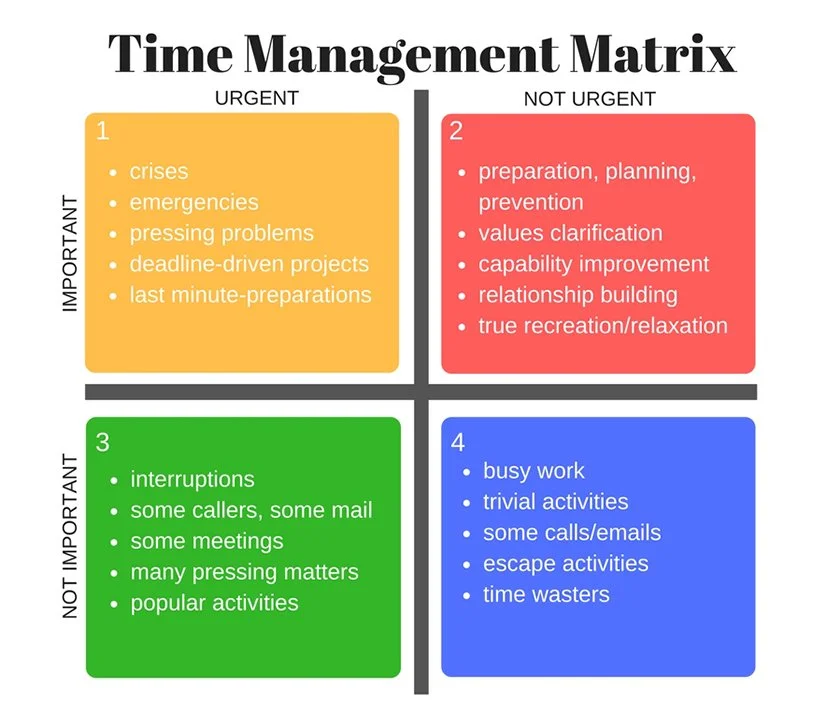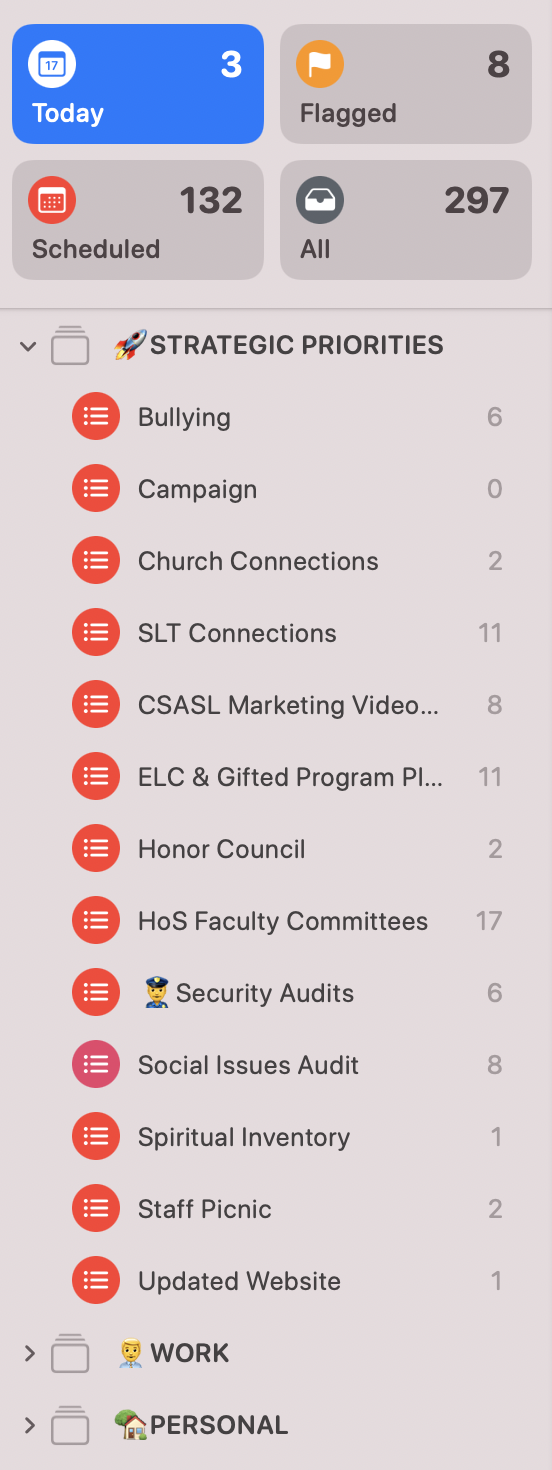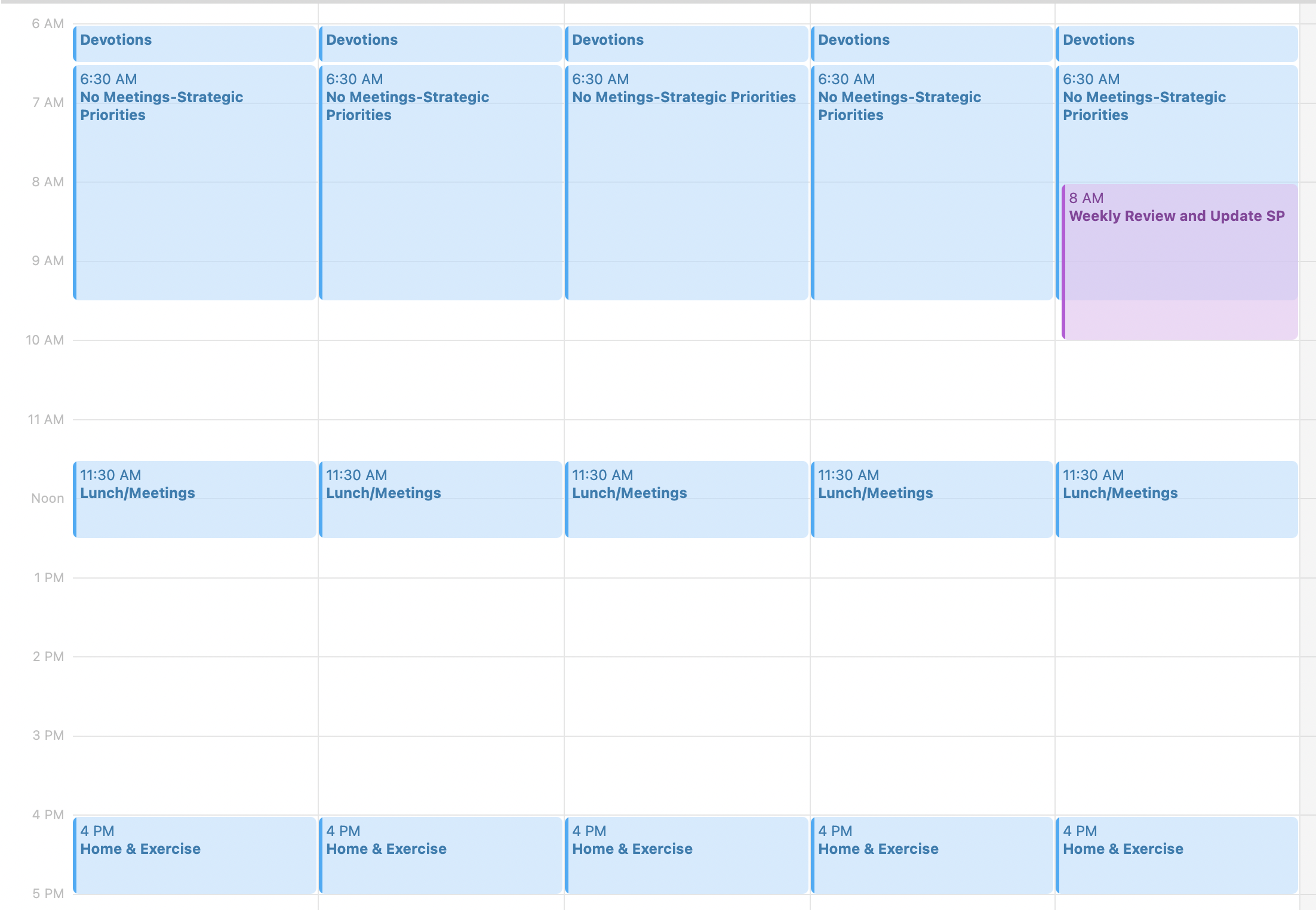Tips for Juggling Balls While Keeping Your Sanity
/By Dr. Barrett Mosbacker
Leadership is a juggling act. Leaders have many balls in the air: emails, phone calls, meetings, events to lead and attend, strategic initiatives and projects to move forward, reports to write, presentations to prepare and deliver, conferences to attend, personnel reviews and other HR issues to address, policy review and development, board development and relationships to manage, financial decisions to make, parent and student issues to address and much more. Then, there are responsibilities to our family, church, and civic organizations, personal finances to manage, home and vehicle maintenance, household chores, vacations to plan, and so on.
It is easy to be overwhelmed juggling so many responsibilities. We are always in danger of dropping one or more balls, which only adds to stress in our lives.
The good news is that there are simple ways to keep the balls in the air without being constantly stressed.
1. Prioritize the Important Over the Urgent
In his best-selling book Seven Habits of Highly Effective People, Steven Covey encourages us to focus on the important over the non-important. He also defines the difference between the urgent from the important.
Urgent matters are usually visible. They press on us; they insist on action. They’re often popular with others. They’re usually right in front of us. And often they are pleasant, easy, fun to do. But so often they are unimportant!
Importance, on the other hand, has to do with results. If something is important, it contributes to your mission, your values, your high-priority goals. We react to urgent matters. Important matters that are not urgent require more initiative, more proactivity. We must act to seize opportunity, to make things happen.1
Steven Covey developed the Eisenhower Matrix, also known as the Urgent-Important Matrix. This matrix is a tool to help us differentiate the important from the non-important. This helps us focus the bulk of our time and energy on the important and less time and energy on the preventable urgent.
“To paraphrase Peter Drucker,” writes Covey, “effective people are not problem-minded; they’re opportunity-minded. They feed opportunities and starve problems. They think preventively. They have … crises and emergencies requiring our immediate attention, but the number is comparatively small.”2 In other words, effective people focus on the important and minimize the number of urgent matters that can distract them. They get the most important things done because they have fewer distractions.
Email is a prime example of how the “urgent” can crowd out the important. Email provides a way for others to add to our to-do list and for us to add to theirs. Making matters worse, there is a growing expectation of an immediate response to an email. And, because we get a dopamine fix when checking email, we are drawn to it like a moth to a flame. Texting and instant communication platforms like Slack make the situation even worse. We end up spending too much time processing emails. In a 2019 Harvard Business Review article titled How to Spend Way Less Time on Email Every Day, Matt Plummer reports that “the average professional spends 28% of the workday reading and answering email, [which] … for the average full-time worker in America amounts to a staggering 2.6 hours spent, and 120 messages received per day”[emphasis added].3
Dealing with email and other supposedly “urgent” things makes us feel like we are being productive, but more often than not, we are being “productive” with relatively unimportant things. We spend hours of our lives processing email and responding to text messages rather than focusing on something that will substantially move our schools’ mission forward. To void the problem, we must be conscious of differentiating the important from the urgent and devote ourselves to focusing on the former rather than the latter.
2. Create a Strategic Priorities List
The easiest way to focus on what is important is to do what is natural for most of us, keep a list. I have divided my work responsibilities and projects into two broad areas: Strategic Priorities and Work. The items under Strategic Priorities are essential for moving our mission forward, putting our core values into practice, and identifying the highest priorities for the coming school year. Below are screenshots of my task manager. The particulars are not important. What is important is how the lists of projects are separated into the important (Strategic Priorities) and the less important (Work). Everything on my lists is of some importance. The difference between the two lists is that the Strategic Priorities list outlines the initiatives to which I will devote most of my time and energy. The other Work items will not be ignored; I’ll continuously work on them during the week but only after I’ve devoted most of my time and energy to the strategic priorities.
3. Block Your Calendar for Strategic Priorities
Having a list is not the same as having the time to work on it. We will face numerous people and things vying for our attention during any given day, most of which fall into the not-important half of the matrix. To guard against this ever-present danger, it is essential to schedule time devoted exclusively to our most strategically important projects. Everyone’s circumstances will differ; therefore, one’s ability to carve out time will also vary. Still, most of us have enough control of our schedules to block off time for our most important projects. Because I’m a morning person, I schedule early mornings for two things—personal devotions and time to work on strategic projects. I also schedule time for exercise at the end of my regular workday. I pre-block these times for the entire year. My executive assistant knows not to schedule meetings during these times unless the matter is both important and urgent. Here is how I structure my week on my calendar. All remaining time is for meetings, events (including after-school events), and other matters that invariably arise during the day or the week.
4. Do a Weekly Review
I strongly recommend that you set aside time each week to conduct what is called a Weekly Review. My calendar shows that my weekly review is scheduled for every Friday morning. I spend this time reviewing my projects, that week’s upcoming events, events scheduled over the next two to three weeks, and clearing out my email and other items. This helps me identify and schedule what I need to focus on. This article, which includes video examples, provides a helpful overview of how to do a Weekly Review in about 30 minutes.
5. Identify the Top Two or Three Priorities for Each Day
This is a simple process. At the end of each day, I take a few minutes (5-10 is usually enough) to identify my top-priority tasks for the following day. My task manager has a recurring weekday task: “What are the three most important tasks for tomorrow?” I ensure they are on my list for tomorrow so I know my priorities for the day as soon as I begin work.
Summary
We can keep many balls in the air without dropping them if we consistently:
Prioritize the important over the urgent
Create a Strategic Priorities List
Block our calendar for Strategic Priorities
Do a weekly review
Identify our top two to three priorities for each day
Carpe diem!
Covey, S. R. (2004). The 7 Habits of Highly Effective People: Powerful Lessons in Personal Change. Simon and Schuster. http://books.google.com/books?id=upUxaNWSaRIC&hl=&source=gbsapi ↩︎
Ibid ↩︎
Plummer, M. (2019). How to Spend Way Less Time on Email Every Day. https://hbr.org/2019/01/how-to-spend-way-less-time-on-email-every-day ↩︎





